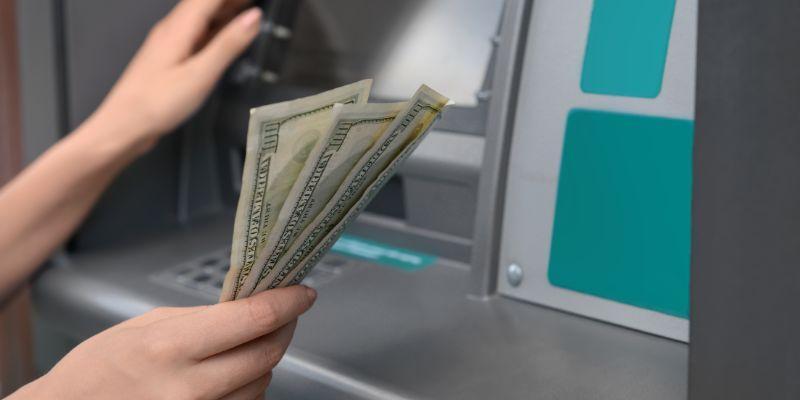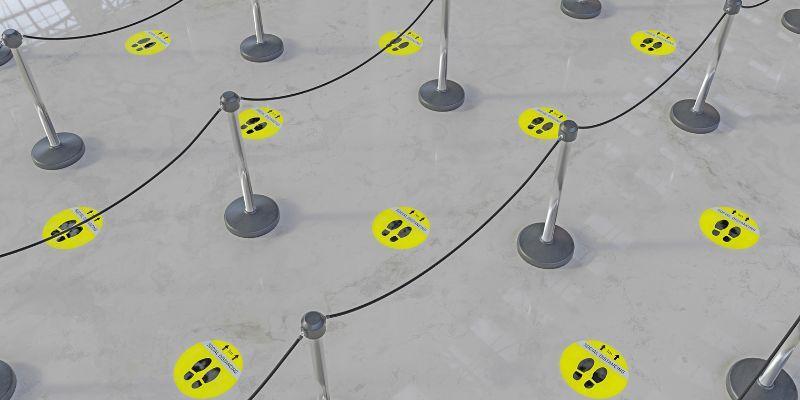A brand experience map is a visual guide that outlines the journey customers take when interacting with a brand. It shows all the key touchpoints where a customer might connect with the brand, from initial awareness to post-purchase feedback.
By mapping this journey, businesses can understand what customers are experiencing, spot any pain points, and find opportunities to improve.
Mapping the brand experience is fundamental because it helps create a smooth and enjoyable customer journey. A well-designed map can lead to happier customers, increased loyalty, and more repeat business.
A brand experience map aims to give businesses a clear view of the customer journey, enabling them to create consistent and positive experiences at every step. Ultimately, it’s a valuable tool for increasing customer satisfaction and boosting the brand’s overall success.
5 Steps to Create a Brand Experience Map

Creating a customer experience brand journey map involves several key steps, each crucial for capturing a comprehensive view of how customers interact with a brand.
Following these steps, businesses can identify touchpoints, emotions, and potential improvements to boost the customer journey. Here’s how to get started:
1. Research and Data Collection
Research is the backbone of any customer experience brand journey map. Start by gathering data from multiple sources to comprehensively view the customer’s journey. Consider using customer surveys to collect feedback on customer satisfaction and pain points.
Analyze website analytics to understand how customers navigate your site, which pages they visit, and where they might drop off. Social media platforms can be valuable for assessing customer sentiment and identifying emerging trends.
Remember customer service logs, which can reveal common issues or questions. Collecting a diverse range of data can build a robust foundation for your brand experience map.
2. Identifying Key Touchpoints
Touchpoints are when customers interact with your brand, both online and offline. To create a practical customer experience brand journey map, you must identify all the critical touchpoints across the customer journey.
These can include your website, mobile apps, email communications, social media, customer service, and physical locations like retail stores. Remember about less obvious touchpoints, such as word-of-mouth referrals or third-party reviews.
By mapping out these touchpoints, you can see the full spectrum of customer interactions and identify areas where customers might face friction or where the brand experience is powerful. Let us now illustrate this with an example.
Northgate, a prominent Hispanic supermarket chain, improved customer experience by identifying key touchpoints throughout the customer journey. They mapped interactions from their website to in-store checkout to find where customers faced friction.
Long queues at the meat section and checkout were vital pain points.
Northgate partnered with Wavetec to implement a queue management system at the meat section and a linear queuing solution at checkout. These changes allowed customers to generate tickets, receive SMS updates, and shop while waiting.
The result was shorter wait times, improved customer satisfaction, and increased profitability.
3. Customer Persona Development
Customer personas are detailed profiles that represent different segments of your customer base. Creating these personas is crucial for understanding your audience’s varying needs, behaviors, and preferences.
To develop effective personas, analyze demographic information such as age, gender, location, and income.
Then, look into behavioral data, including buying habits, preferred communication channels, and engagement with your brand. Psychographic information, like values, interests, and lifestyle choices, can also add depth to your personas.
By incorporating these personas into your customer experience brand journey map, you can design tailored experiences that resonate with specific customer groups, leading to more personalized marketing and improved customer satisfaction.
4. Mapping Customer Emotions and Behaviors
Understanding the emotional journey of your customers is a critical step in creating a brand experience map. This involves mapping out the emotions customers experience at each touchpoint, such as excitement, frustration, satisfaction, or disappointment.
To achieve this, analyze customer feedback and reviews to identify common emotional trends. Consider conducting focus groups or in-depth interviews to understand customer behaviors and feelings better.
You can pinpoint the emotional highs and lows throughout the customer’s journey by mapping these emotions. This information is invaluable for identifying pain points and designing strategies to create a more positive and engaging customer experience.
5. Designing the Brand Experience Map
Understanding your customers’ emotional journeys is a critical step in creating a brand journey map. This involves mapping out the emotions customers experience at each touchpoint, such as excitement, frustration, satisfaction, or disappointment.
To achieve this, analyze customer feedback and reviews to identify common emotional trends. Consider conducting focus groups or in-depth interviews to understand customer behaviors and feelings better.
When mapping these emotions, you can pinpoint the emotional highs and lows throughout the customer journey. This information is invaluable for identifying pain points and designing strategies to create a more positive and engaging customer experience.
Let’s look at a real-world example to see this in action.
MARS Group, owners of M&M stores, partnered with Wavetec to improve customer satisfaction by understanding their customers’ emotional journeys.
They began by mapping the emotions experienced at various touchpoints, such as frustration due to disorganized queues or satisfaction from a smooth checkout.
MARS Group pinpointed emotional highs and lows through customer feedback, reviews, and focus groups. These insights guided Wavetec in designing the UNO-Q linear queue system, reducing wait times and confusion.
MARS improved customer satisfaction when addressing these emotional touchpoints, showing that understanding customer emotions is critical to a successful brand experience map.
Benefits of Brand Experience Mapping

Brand experience mapping offers businesses a powerful way to understand and augment the customer journey.
By visualizing every touchpoint where customers interact with a brand, companies can identify areas for improvement and create more meaningful connections while focusing on customer experience solutions.
This process helps businesses anticipate customer needs, rationalize processes, and drive brand loyalty and customer satisfaction.
Now, let’s look into some specific benefits of brand experience mapping and explore how it can transform customer interactions and business outcomes.
1. Enhancing Customer Satisfaction
A brand experience map helps businesses improve customer satisfaction by providing a clear view of the customer journey. By identifying each touchpoint, from the first interaction to post-purchase support, companies can spot where customers face challenges or delays.
This insight allows them to address issues and create a smoother, more enjoyable experience. For example, if a customer faces long wait times at checkout, a business can introduce a faster process or additional staff to reduce wait times.
Ultimately, this makes happier customers more likely to return and recommend the brand to others.
2. Improving Brand Loyalty
Brand loyalty directly results from consistent and positive customer experiences, and a customer experience brand journey map is instrumental in achieving this.
By mapping the customer journey, businesses can understand what creates repeat customers and drives them away.
This knowledge allows companies to reinforce positive experiences and minimize negative ones.
For example, if customers enjoy personalized interactions with staff, businesses can train employees to engage more personally.
Similarly, offering loyalty programs or exclusive rewards at key touchpoints can promote a sense of belonging and appreciation.
3. Identifying Opportunities for Improvement
A customer experience brand journey map is an excellent tool for identifying opportunities for improvement across the entire customer journey. By examining each touchpoint, businesses can find areas where they can simplify processes, reduce costs, or increase customer satisfaction.
For example, if the brand experience map reveals that customers frequently abandon their online shopping carts, it might indicate a problem with the checkout process. By addressing this issue, businesses can reduce cart abandonment and increase sales.
Additionally, if customer feedback highlights dissatisfaction with a particular product or service, the business can use this information to make changes that better meet customer needs.
4. Aligning Marketing Efforts
A brand experience map can help businesses align their marketing efforts with the customer journey.
By understanding where customers are most receptive to marketing messages and what types of content resonate with them, businesses can create more effective targeted campaigns.
For example, suppose the brand experience map shows that customers often interact with the brand on social media. In that case, a company might focus on social media marketing to engage customers at those touchpoints.
Additionally, the map can help ensure that marketing efforts are consistent across all platforms, reinforcing the brand’s message and values.
Tools and Resources for Brand Experience Mapping

Creating a compelling brand experience map requires combining the right tools and resources. These tools enable businesses to gather data, visualize customer journeys, and reveal insights that drive customer satisfaction.
The following sections will explore various tools and resources, from specialized software to expert consultation services, that can be used to construct a comprehensive customer experience brand journey map.
Understanding these resources will help businesses build a robust map that aligns with their goals and provides actionable insights for improvement.
1. Software Solutions
Software solutions are pivotal for creating a brand experience map, allowing businesses to collect, organize, and analyze customer data to understand the customer journey.
Customer relationship management (CRM) systems can track interactions across various touchpoints, providing a comprehensive view of customer behavior.
Journey mapping software visually represents the customer journey, pinpointing key stages and areas for improvement.
Tools like Wavetec’s Spectra and ViaOS enrich brand experience mapping by offering real-time insights and streamlining customer touchpoints.
Spectra, a queue management software, provides data to control customer flow, while ViaOS, designed for self-service kiosks, delivers enterprise-level integration and remote diagnostics.
These software solutions help businesses visualize the customer journey and lead to better strategic decisions and customer satisfaction.
2. Templates and Frameworks
Software solutions are crucial to building a brand experience map. They enable businesses to collect, organize, and analyze customer data to understand the customer journey.
Customer relationship management (CRM) systems, like Salesforce, track interactions across various touchpoints, providing a comprehensive view of customer behavior.
Journey mapping software, such as Lucidchart, visually represents the customer journey, while data analytics tools like Google Analytics offer insights into customer patterns.
Templates and frameworks help streamline the process. They offer a structured approach to visualizing customer journeys, with templates from MURAL simplifying the mapping.
Frameworks incorporate customer personas and feedback loops to ensure a consistent brand experience. By utilizing these tools, companies can increase customer satisfaction and drive strategic decisions.
3. Expert Consultation Services
Expert consultation services are invaluable when creating a brand experience map. These professionals specialize in customer experience, providing insights and guidance tailored to a company’s unique needs.
They can help identify blind spots in the customer journey, suggest effective strategies for improving customer satisfaction, and recommend the best tools and methodologies for mapping the customer experience.
Consultants can also offer training and workshops to align internal teams with customer-centric approaches, ensuring everyone understands the brand’s goals and how to achieve them.
Using expert consultation services, businesses can build a more effective customer experience brand journey map, which ultimately leads to a smoother customer journey and a stronger brand reputation.
Final Words
Creating a brand experience map is a powerful way to understand and improve the customer journey. By identifying key touchpoints, tracking customer emotions, and gathering valuable data, businesses can design a more satisfying customer experience.
The benefits are clear: improved customer satisfaction, stronger brand loyalty, and opportunities for continuous improvement.
With the right tools, templates, and expert guidance, companies can create a comprehensive map that aligns marketing efforts and the customer journey.
In the end, a well-designed brand experience map doesn’t just lead to happier customers—it drives business growth and sets the stage for long-term success.
BOOK A FREE DEMO





